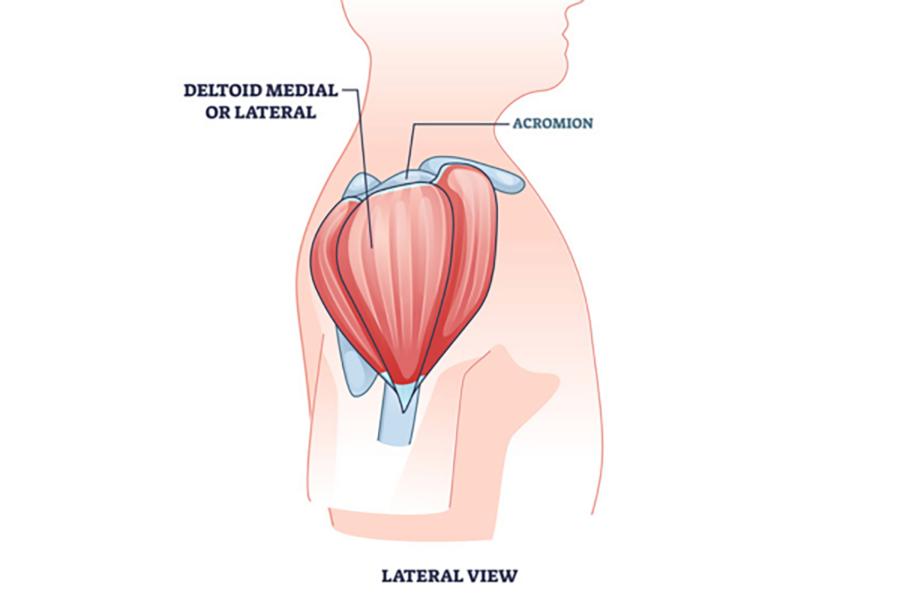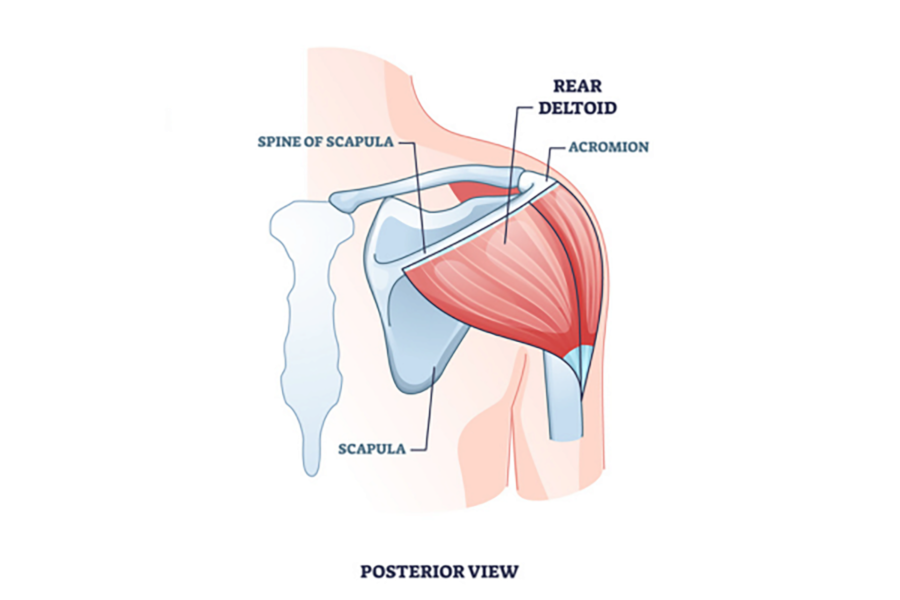3 Best and Worst Exercises for Broader 3D Shoulders
The shoulders, or deltoids, are essential for aesthetics and maintaining proper upper body mechanics, stability, and strength. A broader shoulder and a 3D-looking shoulder are essential to highlight the “V-taper” physique for both men and women who aspire to achieve a strong and aesthetically pleasing look.
When the shoulders are fully developed, they create the illusion of a smaller waist and a more dramatic taper, enhancing the overall aesthetic appeal of the upper body.
However, the importance of strong, well-developed shoulders goes beyond just aesthetics. The shoulders play a vital role in many upper body movements, both in everyday life and in athletic pursuits.
This article will guide you through the best and worst shoulder exercises to help you achieve broader, 3D deltoids.
The deltoids are the largest and most superficial muscle group in the shoulder. They are responsible for shoulder abduction, flexion, and extension and play a crucial role in upper body strength and aesthetics.
The deltoids are composed of three distinct muscle heads: the anterior (front), lateral (side), and posterior (rear) deltoids.
Each muscle group must be targeted effectively to create a well-rounded, 3-D appearance. The anterior deltoid adds bulk to the front of the shoulder, the lateral deltoid gives the shoulders width, and the posterior deltoid adds depth and definition to the back.
We’ve chosen the best exercises based on their ability to effectively engage the muscle groups, maximize the range of motion, and provide the potential for progressive overload.
This muscle adds fullness and roundness to the front of the shoulder, balancing out the lateral and rear heads for a complete, three-dimensional shoulder appearance. It contributes to shoulder flexion, horizontal adduction, and internal rotation of the shoulder joint.
Bodybuilders and physique competitors often prioritize anterior deltoid training to achieve an impressive "capped" shoulder look. Strong and functional front deltoids are crucial for athletes in sports that involve overhead movements, throwing, and pushing, such as swimming, baseball, volleyball, and tennis.
While the Cuban press may seem like a comprehensive exercise that targets multiple shoulder muscles, it can actually be detrimental to shoulder health in the long term since it requires a significant amount of shoulder external rotation to break the weight from the starting position to the shoulder level.
This exercise combines multiple movements into one, which can be unnecessary and counterproductive. Since the Cuban press's pressing motion starts at the shoulder level, it fails to effectively target all the front deltoid fibers and suffers a reduced range of motion.
This movement causes the upper arm bone (humerus) to contact the acromion process, impinging or trapping the tendons of the rotator cuff and bursa, leading to inflammation and pain.
The machine shoulder press is one of the most effective exercises for targeting the front deltoids while minimizing joint stress and promoting muscle engagement. It requires little core stability, which allows you to focus all your efforts on your front delts.
More importantly, most people, even beginners, can push this exercise to failure without breaking proper exercise form. This allows you to maximize your effort and ensure an effective stimulus for muscle growth. This exercise also provides a good stretch on the front delts at the bottom of the range of motion.
Other great exercises for the front deltoid:
Here’s a plan for women that will help you build strong body and defined shoulders:
And for men:
Your lateral deltoid is the strongest and most powerful of the three deltoid heads. It is a key contributor to overall shoulder strength and stability. In sports science, weakness and a lack of muscle volume in lateral deltoids signify shoulder instability, which can result in a high probability of shoulder injury and dislocation.
The lateral deltoid works in synergy with the rotator cuff and upper back muscles to initiate and perform shoulder abduction.
Since the lateral delts broaden the shoulder and upper body, well-developed lateral deltoids are a hallmark of an impressive physique and subconsciously telegraph that you are highly valued for self-discipline.
Balanced development of the lateral deltoids is crucial for maintaining shoulder symmetry and preventing muscle imbalances that can lead to poor posture and increased risk of injury.
The upright row is often considered one of the worst exercises for the lateral deltoid due to its high risk of causing shoulder impingement and rotator cuff irritation. The exercise involves a narrow grip and internal rotation of the shoulder, which can lead to shoulder strain in higher loads.
The narrow grip required for an upright row can place undue stress on the wrist and elbow joints, especially in people with less flexibility and forearm strength.
Unlike other shoulder exercises, leaning cable lateral raise provides constant tension throughout the range of motion, allowing optimal lateral deltoid engagement and muscle growth. By holding onto a sturdy object with your free hand and leaning away from the cable machine, you can maintain tension on the lateral deltoid even during the lowering phase of the exercise.
More importantly, cable exercises can easily be overloaded and adjusted without compromising exercise form and execution.
Other great exercises for the lateral deltoid:
The rear deltoid is the most overlooked part of the deltoid muscles because most fitness enthusiasts prioritize their front profile over their posterior chain during exercises. However, developing a strong and well-balanced rear deltoid is crucial for maintaining a healthy posture and achieving a 3-D-looking shoulder.
Its primary functions are shoulder horizontal abduction and external rotation. They help counteract the excessive pulling of chest muscles and anterior deltoids, which can lead to rounding of shoulders and the development of a hunched posture.
Behind–the–neck presses are more likely to cause shoulder impingement and rotator cuff strain than other exercises. Lowering the weight behind the neck requires extreme shoulder extension and external rotation, which places the shoulder joint in a vulnerable position and increases the risk of impingement.
While some experienced lifters with excellent shoulder mobility may be able to safely perform the behind-the-neck press, it is generally advisable to opt for safer and more effective rear deltoid exercises.
The cable face pull is one of the most effective exercises for targeting the rear deltoid, minimizing joint stress, and promoting proper shoulder positioning.
The cable machine allows easy resistance adjustments, accommodating individuals of different strength levels and enabling progressive overload for continued muscle development.
Other great exercises for rear deltoid:
Building impressive, well-rounded shoulders takes more than just pressing heavy weights overhead. You must approach your training with targeted exercises for your deltoid muscles to achieve the desired "3D" appearance and maintain long-term shoulder health.
Don't be afraid to experiment with different exercises and training styles to find what works best for your body and goals. Remember that this article is just a recommendation. What works for one person may not necessarily work for another. Everyone's body responds differently to various training stimuli, and it's essential to listen to your body and make adjustments as needed.




